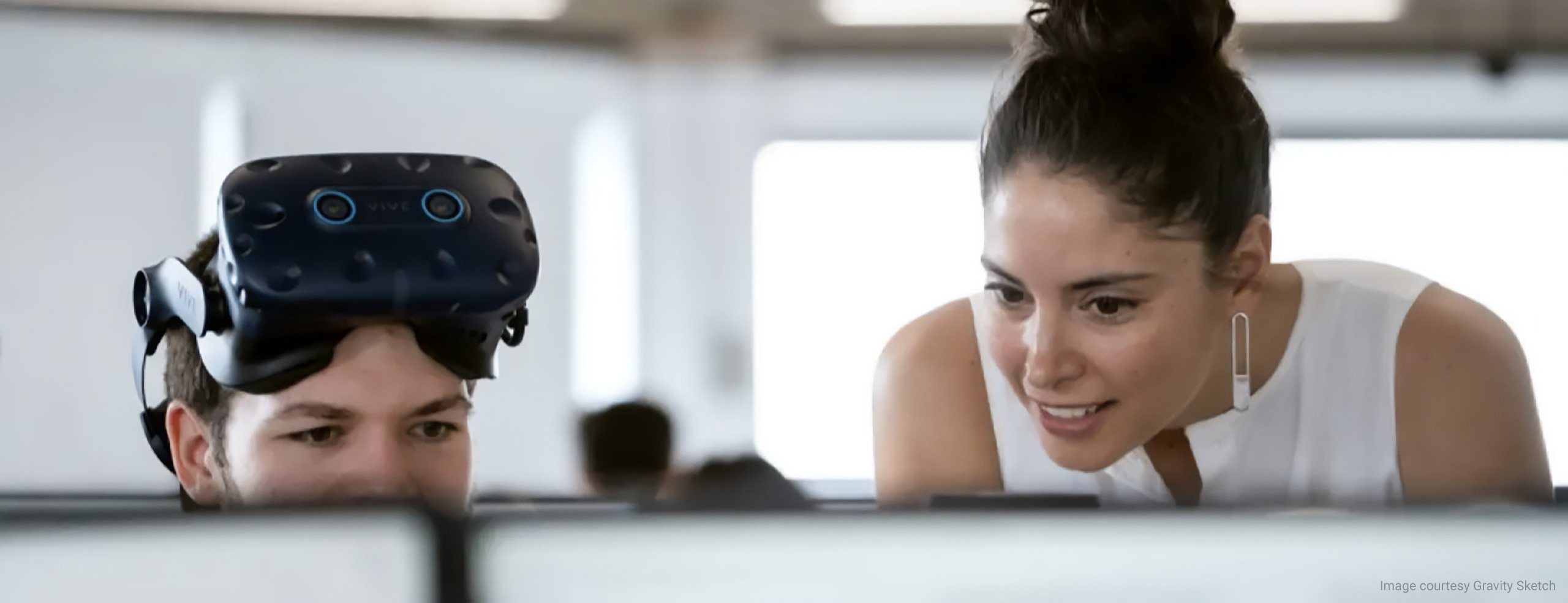Building new worlds with the Center for Research, Innovation and Design (CRID) at American University in Dubai

AEC | Education | Design/Visualization | Article
3 min read
Building blocks
Architecture, art, and design go hand-in-hand. Inspiring awe and wonder everywhere. The combination of form and function is a delicate balance unique to each building, product, concept, industrial design, or piece of art. And supporting new generations of talent is hugely important, across every discipline.
But perhaps the pressure is higher in a location like Dubai, where architecture is regularly pushed to new limits, changing everything people previously accepted and thought was possible. To create such new and exciting feats of design doesn’t just require creativity and daring, it needs the right design tools to unleash the imagination and find that balance of form and function.
Strong foundations
That’s why the School of Architecture, Art, and Design at the American University in Dubai has become a global leader in digital design, establishing state-of-the-art workstations at the Center for Research, Innovation, and Design ( CRID ). In particular, CRID has embraced virtual reality because of the flexibility it allows for creativity, complex graphics, scale, collaboration, and much more. CRID selected the VIVE Pro range – giving students six degrees of freedom in movement, fluid control whether it’s for organic lines or brutalist, with high precision thanks to room-scale tracking, and sharp resolution for the fine details.
Not only has CRID invested in the best hardware, but it’s also worked hard on selecting and developing expertise in software as well. CRID is an authorized VR Sketch training center and a Gravity Sketch certified center, supporting anyone who wants to learn how to design while being inside VR. The range of applications means varied disciplines are catered for, even though they use the same hardware and same physical space. CRID has developed a hub for creativity, flexible and power in its versatility.
CRID has different professional elective courses available, including the “Virtual Environments” module which introduces students to the principles of Virtual Reality modeling methods where students acquire active learning techniques that allow them to 3D design while they are inside VR. This means that the virtual space becomes the canvas rather than conventional 3D paper models or 2D screens.
Dr. Georges Kachaamy , the Director of CRID, Professor of Architecture, and a certified VR Sketch and Gravity Sketch trainer, uses VIVE products in multiple disciplines, scenarios, and circumstances. In addition to using VR for education and teaching design, Dr. Kachaamy utilizes the technology in his exhibitions and ongoing research that deals with Gravity Defiant Architecture (GDA, aka Airborne Architecture).
Collaboration
The collaborative nature of design is fully realized with VR, too. Previously, it could be a challenge for stakeholders like clients, engineers, and contractors to examine the detail of different models and plans. It’s even possible to leave notes and feedback or make live edits while inside VR.
Dr. Kachaamy notes how this shared reality approach directly leads to better learning and fewer mistakes by the time the design is being finalized and has seen first-hand how VR has supported the learning process and retention.
In addition, in VR the scale and the space are limitless. Layers can be applied so it’s technically possible to have every aspect of a building or product – from the wireframe or internal workings, through to the exterior finish and fine detail. Collaboration can take place like never before in one unified model.
Adding greater value to education
Dr. Kachaamy commented, “As an educator, I believe that VR is providing an opportunity to designers that were not possible before and is contributing to the current paradigm shift that is affecting both the design education and industry.”
He continued, “It is crucial to have a continuous and seamless experience. Accuracy, precision, and uninterrupted graphics flow are key factors that allow users to navigate and interact with the virtual world without glitches that can cause motion sickness. Students got the opportunity to sit, stand, or even move freely and all these positions were accurately reflected inside VR.
All of these aspects were possible because of the synchronism among the VR equipment, powerful workstations, and available software that allows the simulation of the real world inside virtual reality. Many have expressed the need of making this tool part of the learning process and as a part to be used in their professional endeavors.”
Beyond design
As an architect who designs gravity defiant structures, VR has provided Dr. Kachaamy the opportunity to create, design, and assess his work from all different scales, perspectives, and sides. Dr. Kachaamy’s latest exhibition titled “ AIRBORNE: The Waterfall Prototype ” is being exhibited at the Palazzo Mora of the European Cultural Center ( ECC ) in the context of the Venice Architecture Biennale 2021.
In earlier exhibitions, visitors could only experience a scaled-down physical prototype but now can enjoy a completely different level of immersion. The full experience of the current prototype can be accessed in VR by visiting the Rising Oases exhibition.